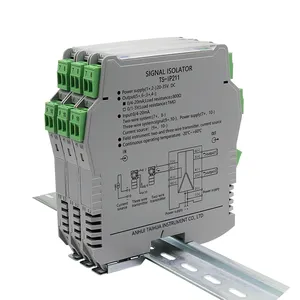
Current Sensor Current Ac Dc Hall Effect Sensor 1.0 Class 5V Single Supply Split Core Ct Hall Effect Current Sensor 800a


Analog Signal Isolator 1 Input 1 Output 0-10V Passive Automatic Control Input Signal Converter Current Distribution Transmitter























Current transducers with a 0-10V output are essential components in modern industrial automation and control systems. These devices are designed to convert a primary input current into a proportional voltage output, typically ranging from 0 to 10 volts. This category of transducers is widely utilized in applications requiring precise current monitoring and control.
There are various types of current transducers 0-10V tailored to different applications. Some are optimized for AC current measurement, while others are suited for DC current tasks. Their applications span across numerous industries, including energy management, motor control, and process automation. The versatility of these transducers allows for integration into diverse systems, facilitating real-time current monitoring and enhancing system reliability.
The construction of a current transducer 0-10V involves robust materials that ensure durability and longevity. These materials are chosen for their ability to withstand industrial environments, which may include exposure to high temperatures, electrical interference, and mechanical vibrations. Features such as electrical isolation, high accuracy, and low drift are integral to the performance of these transducers, ensuring that they deliver reliable data for critical applications.
The primary advantage of using a 0-10V current transducer lies in its ability to provide a linear voltage output that can be easily interfaced with monitoring and control systems. This simplifies the process of current measurement, allowing for straightforward integration without the need for complex signal processing. Additionally, the voltage output of these transducers is less susceptible to noise, which is crucial for maintaining signal integrity in industrial settings.
When selecting a current transducer 0-10V, it is important to consider factors such as the range of current to be measured, the desired accuracy, and the environmental conditions it will be exposed to. It is also crucial to ensure compatibility with the existing system's input requirements. A thorough understanding of the application will guide the selection process, ensuring that the chosen transducer meets the specific needs of the task at hand.
Integrating a current transducer with a 0-10V output into an existing system requires consideration of electrical compatibility and mechanical fit. It is important to ensure that the transducer's output can be accurately read by the system's analog input modules. Additionally, the physical dimensions and mounting options should be compatible with the installation space, providing a seamless addition to the system's architecture.